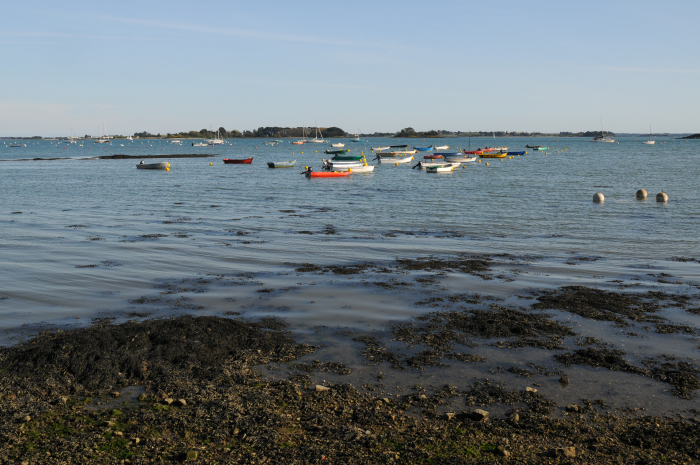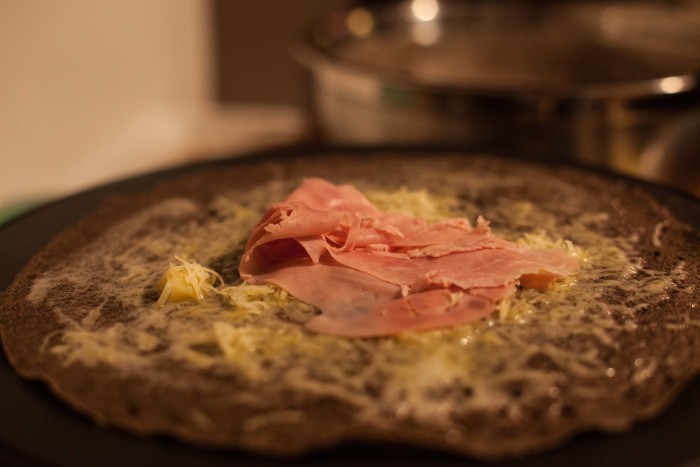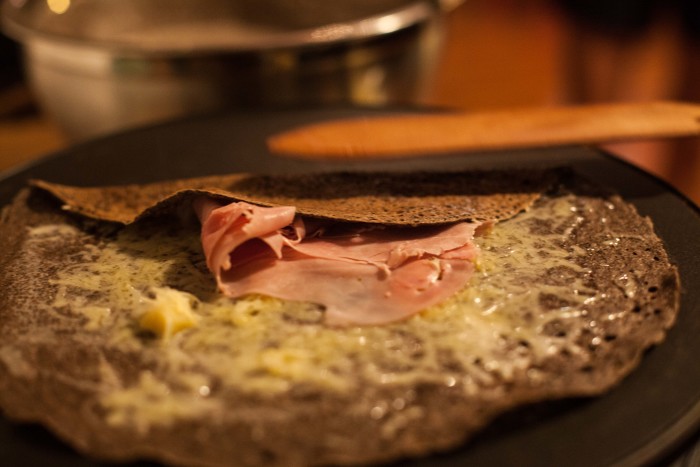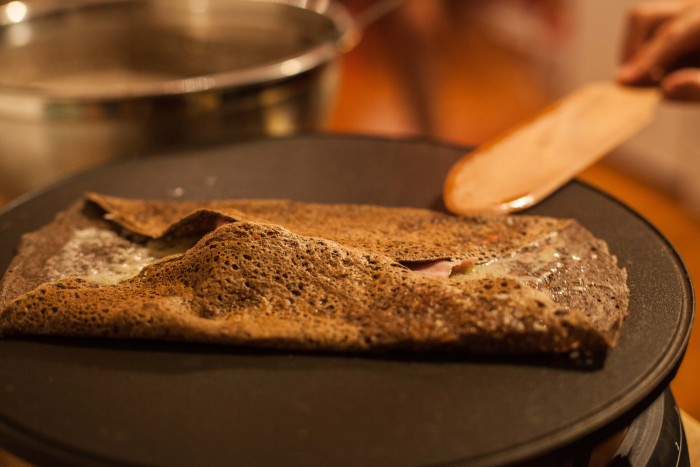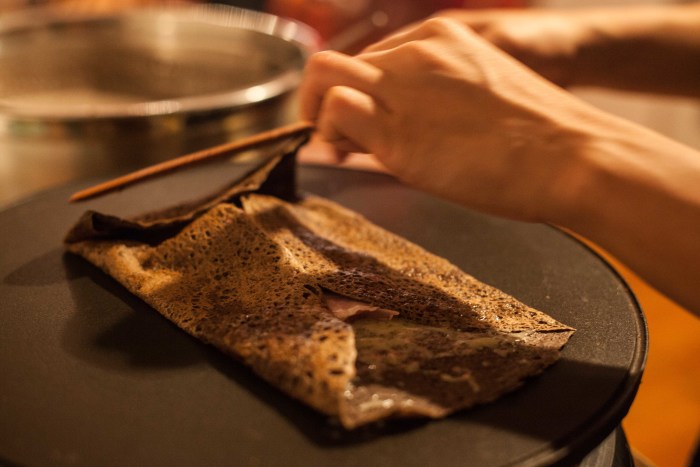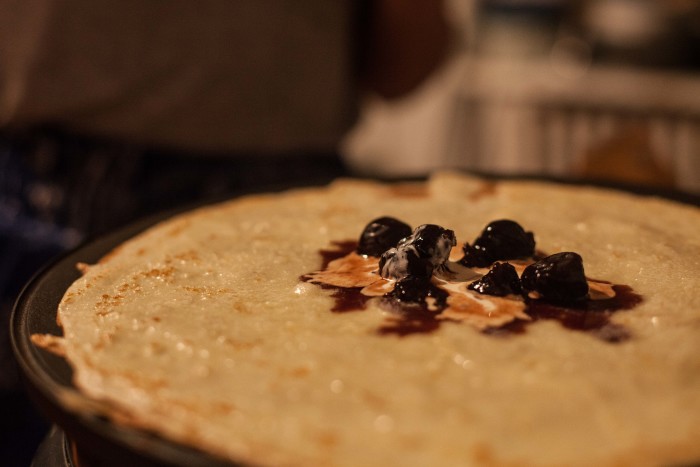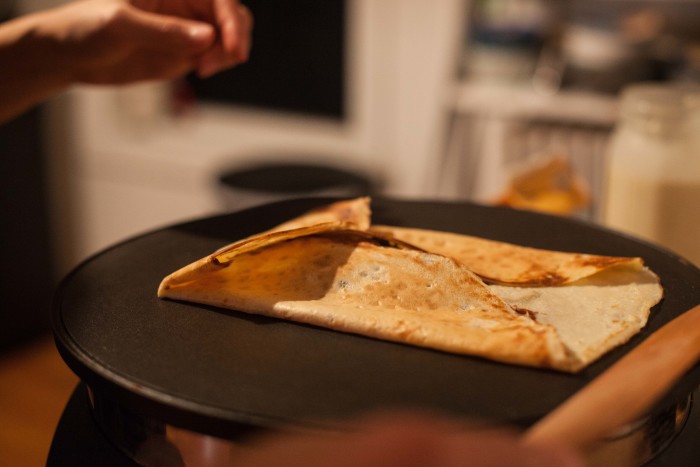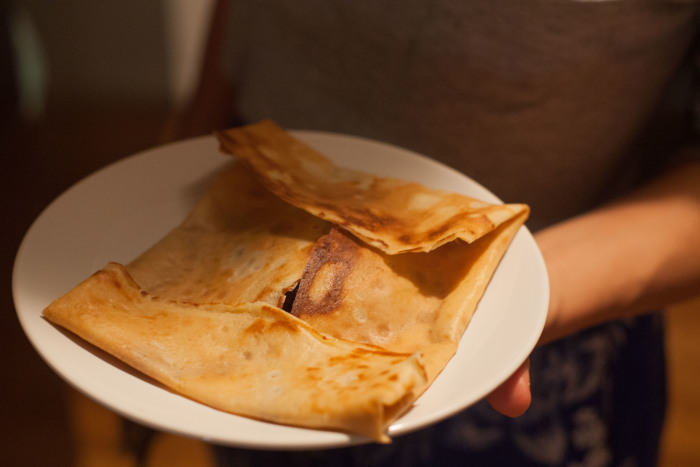une complète, s’il vous plaît!
by sanae
I’m delighted and honored to feature Sara Zin‘s beautiful artwork in this post.
For more paintings, visit her illustrated cookblog: starving artist (and perhaps cook a recipe or two!)
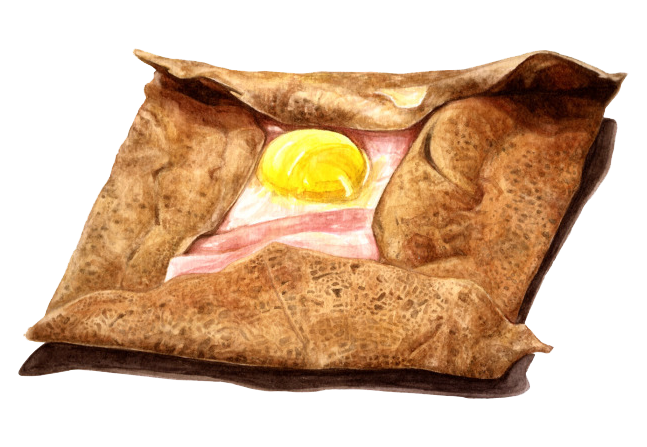
1987, La Vallée, Bretagne. Not many have seen a Japanese woman when my mother arrives to this quiet country road lined with cornfields where my great aunt Germaine kills her geese once a year. My mother speaks French and has cooked her way through Argentina. She knows buckwheat from cold soba noodles that she ate with finely sliced spring onions and shredded seaweed, dipped in sauce. In Japan, she says, pillows are filled with buckwheat hulls the size of pearls to cool one’s head throughout hot, humid summers.
Her first galette with my father is in Saint-Malo – a port on the northern coast of Brittany – at a small restaurant owned by an old woman. My mother doesn’t like the heavy fillings of cheese and egg so she asks for mushrooms in hers and is horrified when she discovers canned mushrooms hidden beneath the buckwheat folds. This must be an afternoon snack, she tells herself. Later we will sit down for a “real” meal. But there is no “dinner” like in Argentina with many courses, and so that night she nurses her cold feet in the bidet of her future in-law’s bathroom, for April is often a cold month in Brittany.
She falls in love with the land and urges my father to renovate a tiny square house once used to store potatoes. The stone walls are as thick as our forearms. My mother and I live in this house during the summers. She names it la casita or la petite maison in French. The ceilings slant so low that we crouch in the bathtub to shower. Down the road we watch Germaine cook galettes in a small, dark kitchen where she keeps her birds in a cage, hanging above her head. There, she chats with the birds as a gas crêpière smokes. She flips soft, spongy galettes onto a large plate. Hers are famous for the handful of grey salt she throws into the batter.
But do you like galettes? I ask my mother, as she tells me these stories.
Oh, of course, I love galettes, but not with canned mushrooms.
We all know how to make galettes in our family: my mother, my father, my four-year-old brother, and even our family friends. How did we learn? My father’s maternal grandmother left her farm at fifty and opened a small galette storefront in Rennes where she sold buckwheat crêpes by the dozen. She taught my father to make galettes and crêpes when he stayed with her on weekends.
Inspired by his grandmother, my father continued to flip crêpes throughout his adolescence, working at a crêperie during the summers on the coast of Brittany. At twenty-three he left France for the first time and travelled to the Bahamas. When he arrived in Nassau he thought the air was hot and humid from the plane propellers. He had never been to a tropical country. His intention was to open a crêperie, but instead he distributed samples for a company that had sponsored his trip. He returned to France several months later. In the 90s, when we moved to Australia, he persuaded his best friend, a French chef at a fine-dining restaurant, to let him work in the kitchen on Friday evenings. Still dressed in a suit from work, my father carried his cast-iron crêpière to a corner of the pristine kitchen and quietly made crêpes Suzettes. He taught the other cooks and soon they had mastered the art of the thin, laced pancakes.
Photo by Maurice Lemoine
There is nothing quite like the smell of water evaporating from buckwheat when it hits a hot pan, or the bitter, grainy flavor of buckwheat flour, or the sound of a wooden spoon sucking at the batter like feet sinking into black silt along the coast of Brittany.
A galette, when well cooked, is copper-colored and skin-thin, its surface covered in beautiful, tiny holes like those you find at the center of a pain au levain.
We rarely sway from our usual order. As if reading each other’s minds, my grandmother and I would always say: une jambon-fromage (ham and cheese). My father and grandfather still say: une complète (ham, cheese, and egg). We know what we want, and we don’t approve of change. To impress guests, my father caramelizes onions or sautés (fresh) mushrooms. In Australia he filled galettes with smoked salmon, crème fraîche and chives when my mother refused to eat ham. And from time to time I embrace these variations, but when I prepare leftover galettes alone, I cover the soft, grey disks with only salted butter. I eat three or four, standing by my hot crêpière.
There are two camps in the galette-making business: those who add white flour, eggs and milk to their buckwheat, and those who only use buckwheat, salt and water. For a while I thought the flour-egg-milk galettes were inauthentic: the batter is easier to spread with eggs. But I’ve learned the difference is regional. Where we come from the galettes are soft and riddled with small holes, their texture not so different from the spongy Ethiopian injera. The flour-egg-milk galettes, however, are lighter and crisp, with a smooth surface. You will often find these in Parisian crêpéries. My father’s are a harmonious combination of both worlds; while staying true to the buckwheat-water-salt combination, he cooks his longer so they darken and crisp with butter.
Galettes
(Allow four to five hours for the batter to rest)
Ingredients:
For the galette:
1kg buckwheat flour
2 liters water, or more. Begin with 1.5 and slowly increase until the batter is runny, but not watery. Test with your first galette. When you ladle the batter onto the pan, it should keep its shape. It shouldn’t spread uncontrollably, as you’ll be doing the spreading with a râteau (rake).
30 g coarse sea salt (do not use fine sea salt, it has to be very coarse – “gros sel de Guérande”)
If you don’t have a wooden “râteau,” (rake) or an electric plaque (crêpe maker) add more water to the batter and swirl in a big pan. Here is a video that shows you how to make a galette without a crêpière.
Toppings (quantities depend on your guests):
Good quality salted butter
Ham
Gruyère cheese, grated
Eggs
Directions:
In a large, heavy bowl pour the buckwheat flour and salt. Add water slowly. Beat with a strong, wooden spoon. The batter will be elastic and heavy. You’ll need some good muscles and patience as you beat the batter. The longer you beat, the lighter the batter is. We usually beat ours for ten minutes. Then cover with plastic wrap and let it sit in the fridge or in a cool, dry room for four to five hours.
Heat the pan until it’s uniformly hot. Test by flicking water onto the pan. It should sizzle and evaporate. Grease the pan with a little oil mixed with yolk, or just oil (to do this stir one yolk and 2 tbsp. oil in a bowl and dip a rolled up paper towel into the mixture and rub it across the pan). Pour a ladle of batter onto the surface. Wait thirty or so seconds before flipping. Flip back again. Butter generously, crack an egg, spread the egg white carefully making sure to keep the yolk intact, and sprinkle cheese and pieces of ham on the egg white as it cooks, leaving the yolk uncovered. Fold like an envelope, leaving the middle open (see photos). I like to “scramble” my egg so it cooks uniformly. To do this I break the yolk with a spatula and lather it across the galette. Eat while still hot!
Crêpes
Ingredients:
1 kg flour
2 liters whole milk
250 g sugar
11 eggs
200 g melted butter, cooled
½ teaspoon salt
1 tablespoon corn starch
Directions:
Pour the flour, salt and cornstarch into a large bowl and dig a well. Crack the eggs into the well. Stir with a wooden spoon and add milk little by little. Add sugar and melted butter. Stir. If the batter is lumpy I pass it through a strainer. Like for the galettes, heat a pan and ladle the batter onto a hot pan. Test for the consistency – you may need to add a little more flour or milk. Swirl, flip, flip again, and fill with salted butter, your favorite jam, and a spoonful of whipped cream. Or any other filling you like, such as shaved dark chocolate or lemon cream.
galette & crêpe photos by Geoffroy Bablon

